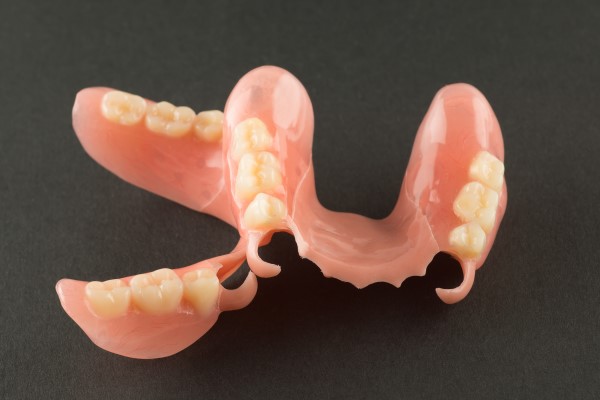Orthodontics vs. Cosmetic Dentistry

Two available options for improving the appearance of teeth include orthodontics and cosmetic dentistry. It may be difficult to decide which treatment course to choose. Though the results can be similar, the techniques involved are very different. Certain techniques may be more effective at correcting particular problems. Therefore, the specific issues one is experiencing with one's teeth may determine the preferable course of treatment.
Techniques involved in cosmetic dentistry
As implied by the name, cosmetic dentistry focuses on improving the aesthetic appearance of teeth. Some of the treatments a cosmetic dentist provides, such as dental replacement in the form of implants or dentures, provide a medical or dental health benefit, while others do not. Techniques involved in cosmetic dentistry include the following:
Tooth-colored fillings
These provide the same restorative properties as fillings made of silver amalgam do. However, they do not produce the tooth discoloration that sometimes characterizes metal fillings.
Dental implants
A dental implant is a prosthesis made of metal and porcelain. Surgery is required to insert it into the jaw. Following successful implantation, it has the function and appearance of a natural tooth.
Tooth whitening
This involves applying bleaching chemicals to lighten the coloring of teeth.
Bonding and veneers
The latter is a thin piece of porcelain applied to the teeth to improve their appearance. The former is a composite resin painted on to restore damaged teeth. Each also has strengthening properties.
The professional organization the American Academy of Cosmetic Dentistry regulates the standards of practice for the field. Dental professionals who are accredited by AACD have received appropriate licensing and training in the field. Nevertheless, AACD accreditation is not required to practice cosmetic dentistry.
Issues addressed by orthodontics
While cosmetic dentistry seeks to change the appearance of the tooth itself, orthodontics seek to change the position of the teeth with braces and/or other appliances. Straighter teeth can be more aesthetically pleasing, so many people seek orthodontic treatment for purely cosmetic reasons. However, there may also be mechanical abnormalities in the mouth affecting the jaws and teeth. Issues such as these can cause problems with speech and contribute to painful conditions, such as chronic headaches and TMJ disorder. Cosmetic dentistry cannot correct these mechanical problems, but orthodontics can.
These common problems may indicate a need for orthodontic treatment:
- Overcrowding: Occurs when the jaw is too small to accommodate adult teeth, causing the teeth to come in crooked
- Spaced teeth: The opposite problem; the jaw is too wide, so the teeth come in with broad spaces in between
- Anteroposterior deviation: One of the jaws protruding too far beyond the other, whether it is the upper jaw (overbite) or the lower jaw (underbite)
The standards-setting orthodontic professional organization is the American Academy of Orthodontists. It only accepts members who complete dental school and a subsequent residency in an accredited orthodontic program.
Conclusion
A course of orthodontic treatment takes longer to complete than cosmetic dentistry. However, if you are looking for a solution to a biomechanical issue involving the teeth, jaws or mouth that causes pain and reduces function, orthodontic treatment is more likely to produce the desired results.
Are you considering orthodontics in the Mableton area? Get more information at https://www.providencefamilydentistry.com.
Check out what others are saying about our dental services on Yelp: Orthodontics in Mableton, GA.
Recent Posts
Halitosis is the general dentistry term for chronic bad breath, which means it is constant and does not go away. Although it may be surprising, a lot of people struggle with halitosis every single day. Thankfully, in general dentistry, there are a lot of ways to manage and treat the condition. Below is an overview of…
There are many benefits to removable partial dentures instead of alternative treatment solutions (i.e., implant-supported bridges). Understanding the advantages of partial dentures can help you make the most informed choice possible about the best way to replace your missing teeth. Removable partial dentures are a form of teeth replacement for a section of missing teeth. They…
A tooth replacement procedure is necessary when someone has lost their natural teeth. Teeth play an important role in maintaining good health and oral functions like chewing and speaking, so tooth loss can be quite devastating. Fortunately, there are many tooth replacement options available today to replace missing teeth.Options available for those who have missing…
A dental inlay is often necessary for teeth that are in bad shape, whether it be due to cavities or accidental injuries such as cracks or chips. However, among dental restorations, inlays are not the most common type. Most people are familiar with dental fillings or crowns, but general dentists also recommend dental inlays for…


